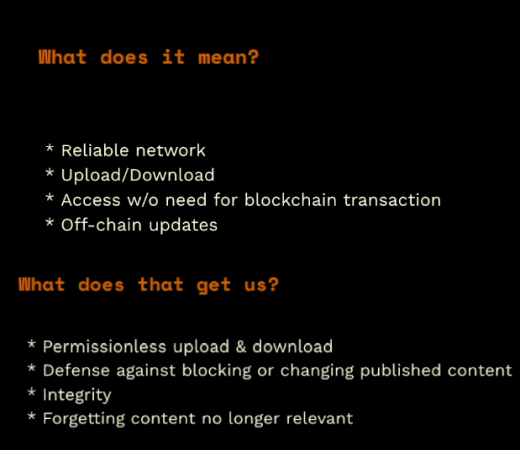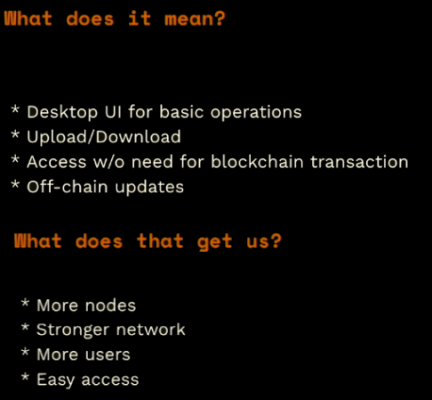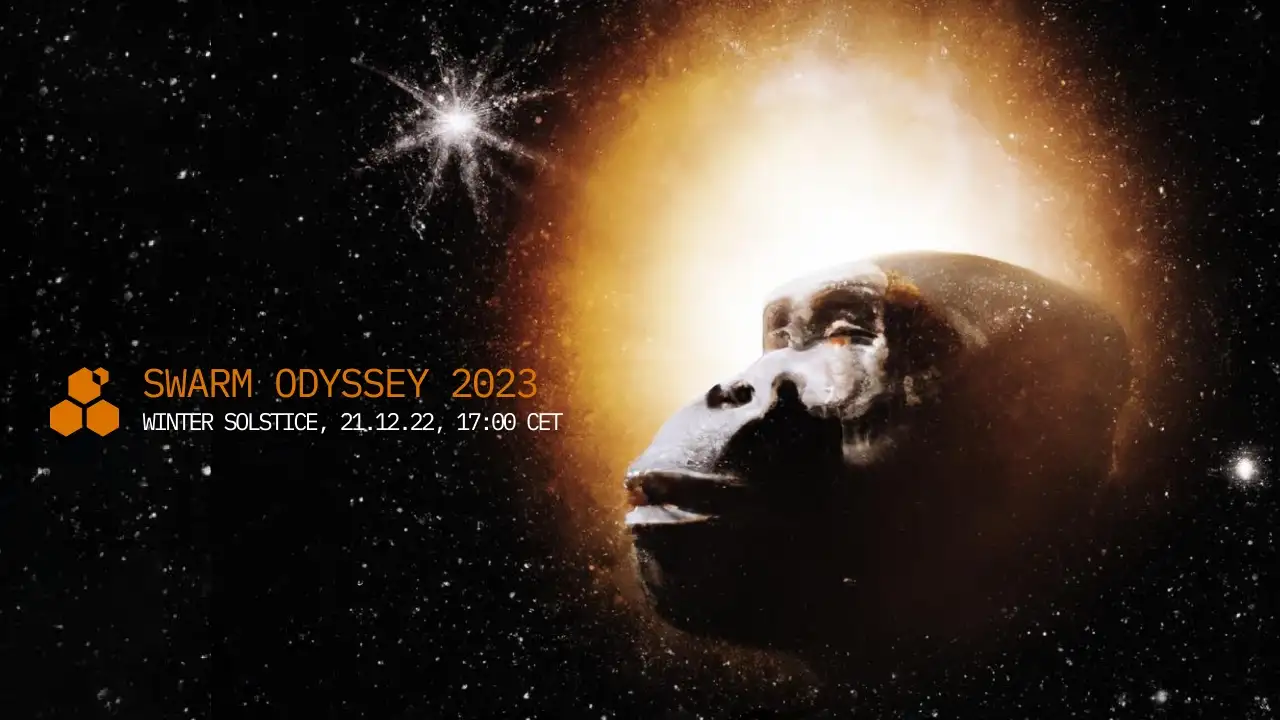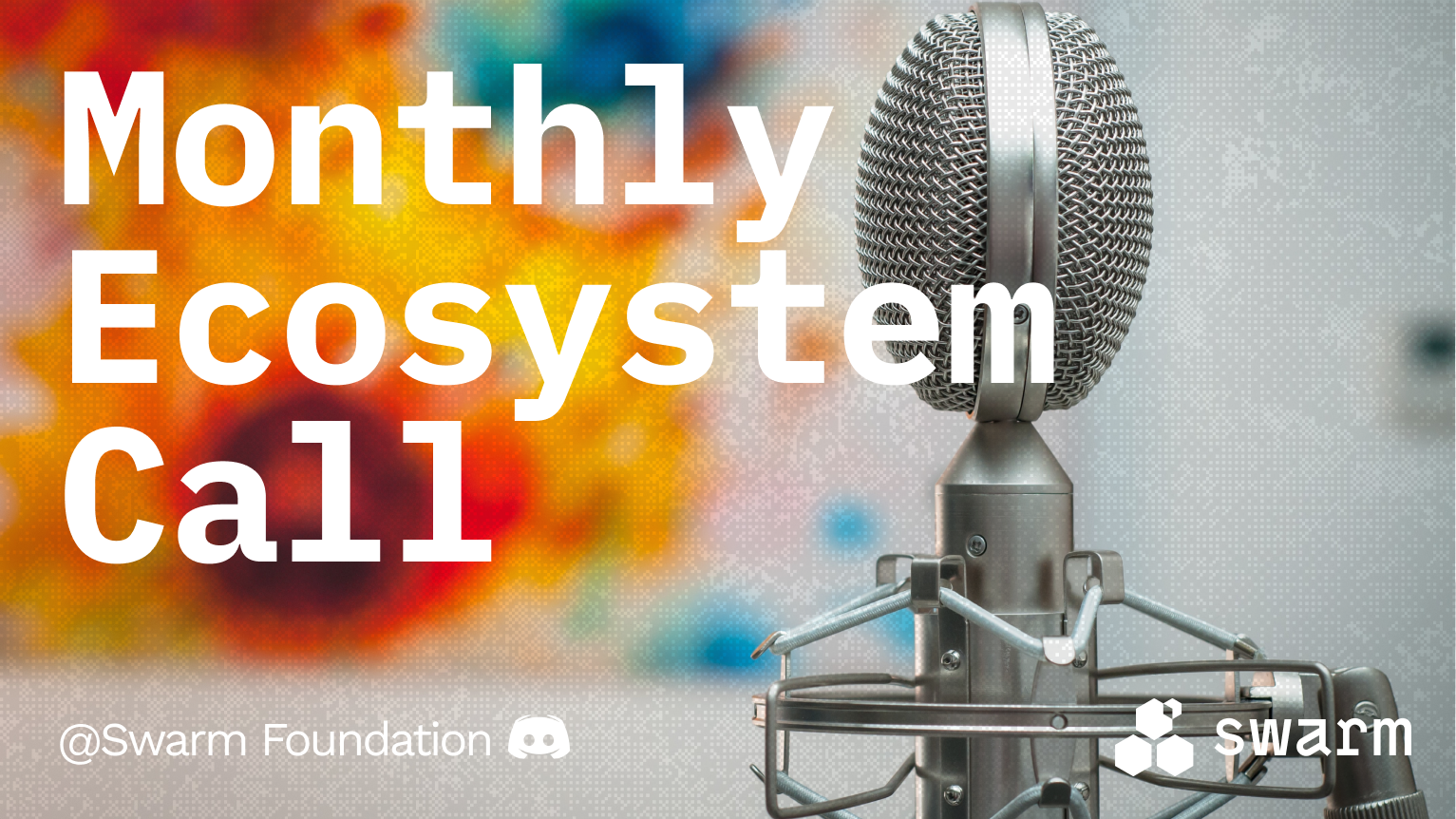On Friday, 18 February 2022, Angela Vitzthum, the Product Owner for Fairdrive, took the Wave stage at ETH Denver to introduce the audience to Swarm and more specifically to Fairdrive.

Watch Angela’s talk on YouTube — click the image
Starting her presentation, she laid out the basics of Swarm and its long-term goals — a system of peer-to-peer networked nodes that form a decentralised storage and communication service, that wants to provide a scalable and self-sustaining infrastructure for a supply chain economy of data.
As such, she added, Swarm needs to support a variety of user types and provide a different value for each of them. This encompasses everything from providing a smooth experience to end users to enabling communities to take further ownership of the protocol and its usages. All these user types come together to form the foundations of Swarm, Angela explained.

Milestones so far…
She continued by describing Swarm’s first developmental milestone achieved on last year’s winter solstice. The milestone added the ability to upload and download unstoppable content to the network (e.g. websites and NFT metadata). This means that the network is now reliable enough to store websites.
The network supports file and folder upload/download as well, and you can use your own ENS domain or generated name as a sub-domain with a bzz.link. Websites and front-end apps on Swarm also work the same way as if they were served by a Web 2.0 content-hosting service. At the same time, feeds allow you to update the content on Swarm off-chain without incurring any on-chain costs.

Milestone 1 — what it means and what it gets us
…and milestones ahead
As Swarm moves toward Milestone 2, Angela continued, the goal is to optimise Bee node interaction for ease of use. “In a nutshell, every crypto enthusiast with an interest in Swarm should be able to easily set up and use a Bee node,” she added. This will be achieved with a desktop app that can be installed without any registration or blockchain interaction.
This would work in two increments. In the first, the node would run as an ultra-light node that can only access and download content. For the second increment, where storing files on the network is also possible, a crypto onboarding process would be required to fund the node, she explained. According to her: “Milestone 2 is directly aimed at simplifying the process so that it can be done in less than 30 minutes.”

Milestone 2 — what it means and what it gets us
In addition to that, the Swarm team will be improving the documentation so that node operators can be up and running in less than 30 minutes as well.
Briefly touching on Milestones 3 and 4, Angela explained that Swarm would focus on direct node operator rewards and optimising for larger data uploads.
Fairdrive, a quick rundown of the works
The other half of her presentation focused on Fairdrive, a community-driven initiative started by Swarm. Fairdrive is a private and open-source personal data store dApp. It consists of a drive interface with files and folders and a BZZ wallet to manage balances and keypairs.
A lot of work has been done in the recent months, including code refactoring, feature optimisation and improved usability, Angela revealed.

Fairdrive UI
This resulted in a new look and feel and a more intuitive experience, which is a vast improvement from before when it looked “more like a terminal window”. Another improvement is the increased robustness of the drive portion, namely the added deletion, upload and download of stored files. Furthermore, any pod or file inside Fairdrive can be shared and displayed in a friend’s Fairdrive. Additionally, the dApp has been upgraded with a new file search and sort system.
Along with all these improvements, Fairdrive now supports a direct .csv upload to its key-value store, allowing for powerful data queries. To top it off, a native consent viewer has been added that allows users to open up consent receipts.
Besides the “Drive” portion, Fairdrive includes the “Explore” option too, which is intended for dApp developers that are building with interoperability and decentralisation in mind.
Looking ahead, Fairdrive will soon be launching a private mainnet beta stage. Not only that, in the near future it will be able to generate an NFT based on the NFT data stored in Fairdrive. The “Explore” tab will be enriched with new dApps, including the new and improved Photoviewer.
FairOS is nearing alpha
For the closing part of her talk,, she mademade an excitinging announcement — FairOS is entering its final development phase before an alpha release. FairOS is running in WASM and client-side FairOS can interact with Bee nodes on local networks or via gateways. This lets dApps use Swarm as a directory or a file system in a seamless manner and provides near-native speeds for encryption and chunking.
It supports all of your favourite coding languages, making FairOS a game-changing approach to using decentralised storage.
You can watch Angela’s entire talk here.
For more information and news on Swarm, tune in to the channels below.
Want to dive deeper into Fairdrive? Tune into Angela’s talk on Fairdrive with a live demo at the upcoming We Are Millions (WAM) Hackathon and Festival, organised by Swarm and Partners.
Discussions about Swarm can be found on Reddit.
All tech support and other channels have moved to Discord!
Please feel free to reach out via info@ethswarm.org
Join the newsletter! .


